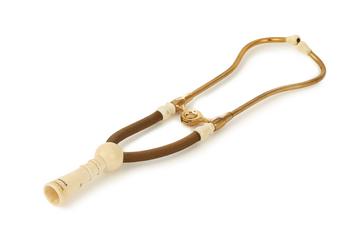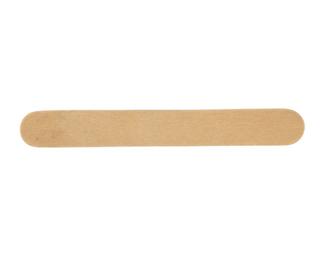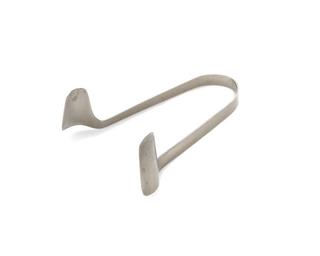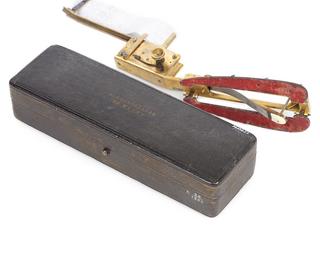
Southall’s ureometer, Birmingham, England, 1860-1910
- Made:
- 1860-1910 in Birmingham

Southalls' ureometer, in cardboard box, by Southall Bros. and Barclay, Birmingham, English, 1860 to 1910. Consists of ureometer, burette, three dropper glass & curved tips
An ureometer detects and measures the amount of urea in urine by a simple, indirect chemical test. Urea was identified in the 1800s as a breakdown product of the body’s activity. Its level in urine possibly indicates medical problems. Manufacturers such as Southall Brothers and Barclay of Birmingham started making small portable test kits for doctors to use at the patient’s bedside. The ureometer kit consists of a glass ureometer, burette (a graduated glass tube with a tap at one end), and three glass droppers. It was made to the design of Dr Charles Doremus of New York.
Details
- Category:
- Clinical Diagnosis
- Collection:
- Sir Henry Wellcome's Museum Collection
- Object Number:
- A602714
- Materials:
- ureameter, glass, pippette tube, glass, pippette bulb, rubber and case, cardboard
- Measurements:
-
overall: 60 mm x 115 mm x 185 mm, .1127 kg
- type:
- ureometer
- credit:
- Bruce, A.N.




